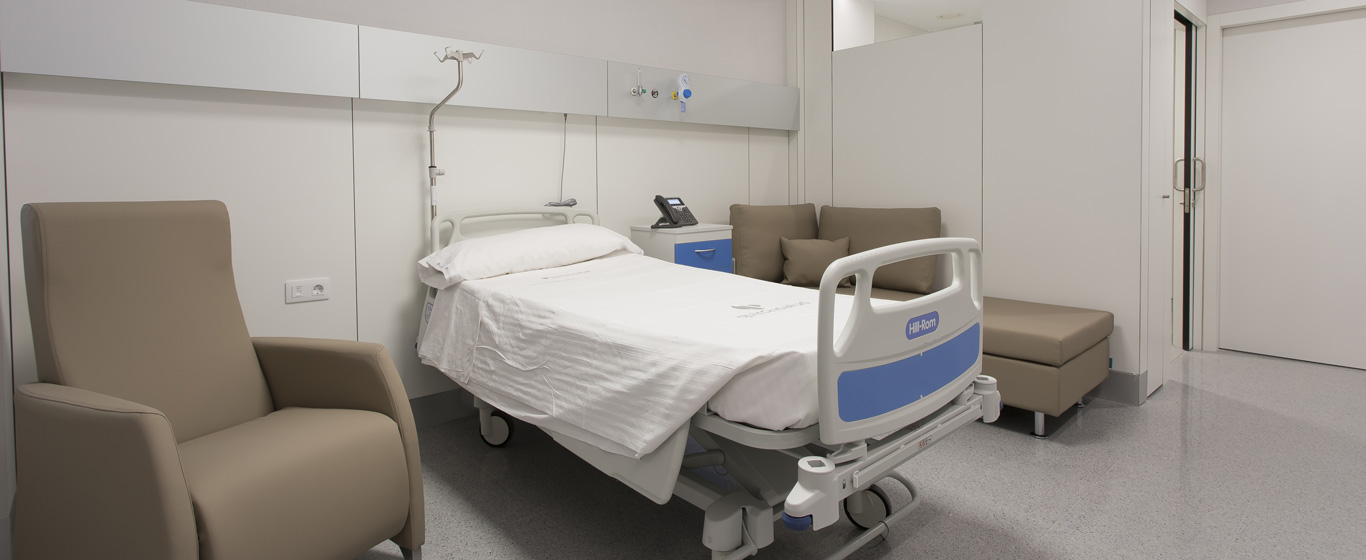Spinal Stenosis
What are the newest treatments for spinal stenosis? Get all the information about the causes, symptoms, and prognosis of this condition.
Symptoms and Causes
Spinal stenosis is a narrowing of the spinal canal through which the spinal cord and nerve roots pass. When this narrowing compresses nerve structures, it can cause pain, cramping, and other symptoms. It is quite common in adults over 50 and often coexists with herniated discs or spinal deformities.
Depending on the affected area, spinal stenosis is classified into:
- Lumbar spinal stenosis: Located in the lower part of the spine.
- Thoracic spinal stenosis: Found in the middle part.
- Cervical spinal stenosis: Occurs in the upper part.
Symptoms
Spinal stenosis only causes symptoms when the reduced space in the canal compresses nerve structures. When symptoms appear, they usually develop slowly and progressively, worsening over time. However, they can also manifest suddenly due to trauma. The symptoms depend on the affected vertebral level:
Symptoms of lumbar or thoracic stenosis:
- Pain radiating down the leg, from the buttocks to the foot.
- Heaviness and cramping in one or both legs.
- Tingling and weakness in the buttocks, legs, or feet.
- Lower back pain.
- Symptoms worsen while walking and improve when stopping, leaning forward, or sitting.
Symptoms of cervical stenosis:
- Numbness
- Weakness in the hands, arms, legs, and feet.
- Decreased sensation in the hands.
- Difficulty walking and instability.
- Neck pain.
- Bowel or bladder problems.
Causes
The causes of spinal stenosis can be divided into three groups:
- Degenerative: The most common cause. The narrowing of the spinal canal results from the natural aging process or degenerative conditions such as arthritis, herniated discs, or ligament stiffness.
- Congenital: The narrowing of the spinal canal is present from birth due to genetic conditions affecting bone growth or spinal malformations.
- Traumatic: Canal alterations occur due to trauma or spinal injury.
Risk Factors
Several factors contribute to the development of spinal stenosis, including:
- Obesity: Excess weight increases pressure on the vertebrae, raising the risk of developing herniated discs that may lead to stenosis.
- Repetitive high-impact exercises: These exert continuous pressure on the bones.
- Poor posture: Maintaining forced postures or making sudden movements can injure the spinal canal.
- Underlying spinal conditions, such as scoliosis.
- Age: Aging causes spinal wear and tear.
Complications
In most cases, the prognosis is good. However, depending on the severity and intensity of symptoms, spinal stenosis can significantly affect the quality of life. In severe cases, it can cause incontinence or sexual dysfunction, while in very rare and extreme cases, it may lead to partial or complete paralysis.
Prevention
The simplest way to prevent spinal stenosis is to avoid its risk factors:
- Maintain a healthy body weight.
- Engage in regular, moderate-impact exercise.
- Maintain good posture.
Which Specialist Treats Spinal Stenosis?
Spinal stenosis is diagnosed and treated by specialists in orthopedic surgery, traumatology, and neurosurgery.
Diagnosis
In addition to reviewing the patient’s medical history and symptoms, spinal stenosis is diagnosed using several procedures:
- Physical examination to assess symptom severity.
- Imaging tests, such as X-rays, MRI, or CT scans, to examine the spine and determine the cause of stenosis.
Treatment
There are different treatment options for spinal stenosis. The choice depends on the severity of symptoms:
- Home remedies: For mild cases, rest, over-the-counter pain relievers, and heat application to relieve pain or cold application to reduce inflammation are recommended.
- Pain medications: Including nonsteroidal anti-inflammatory drugs (NSAIDs), antidepressants, anticonvulsants, or opioids.
- Physical therapy and rehabilitation exercises: Help strengthen the area, maintain spinal flexibility and stability, and improve balance.
- Epidural corticosteroid injections: Reduce inflammation of the nerve roots caused by canal narrowing. This procedure can weaken bones, tendons, and ligaments, so it must be performed sparingly.
Surgical procedures: In severe cases where other treatments fail, surgery may be necessary to relieve pressure on nerve structures:
- Laminectomy: A decompression surgery that removes the back part (lamina) of the affected vertebra, sometimes along with ligaments and parts of the bone. This procedure increases space within the spinal canal.
- Laminotomy: A partial laminectomy. Only the portion of the lamina causing the most pressure on the nerve is removed.
- Laminoplasty: Performed exclusively for cervical spinal stenosis. A section of the lamina is removed and rotated to one side, creating a hinge. Metal implants are then used to bridge the open section of the spine.
- Foraminotomy: Bone or tissue is removed from the foramen, the part of the vertebra where the nerve root exits, to create more space for the nerves.
- Interspinous device insertion: Spacers are placed between vertebrae to keep them apart.
- Spinal fusion: This procedure permanently fuses two vertebrae to prevent movement, helping to reduce pain. It is used only as a last resort.

































































































